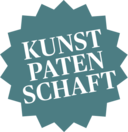Pistole: Radschlosspistole
um 1555, Owner: Erzherzog Ferdinand II. Sohn des Ferdinand I. von Habsburg Österreich, Landesherr von Tirol
Radschlosspistole
This wheellock pistol was once owned by Ferdinand II, Archduke of Austria. It was made at Brunswick, then a leading centre of elite gun production. The use of costly decoration and the collaboration with goldsmiths are typical of weapons produced there.
The wheellock of this pistol is embellished with damascene work in silver and gold, and plant motifs have been damascened in silver onto the octagonal barrel. The grip is decorated with a crucifix framed by a couple (above) and two fauns (below). The mounting of the barrel features hunting scenes – a hunter as well as hounds, hares, and deer. The pommel, cast in silver, is shaped like the head of an animal, possibly a tiger. Note also the depiction of Gaius Mucius Scaevola on the side of the pistol. This mythical hero from the early years of ancient Rome demonstrated his bravery after he had been captured by the Etruscans by thrusting his right hand into the fire and holding it there without giving any indication of pain.
The wheellock was a technical innovation probably introduced around 1500, which allowed the production of more compact firearms that could be handled and fired with one hand.
Unlike heavy cavalry troops, who were armed with lances, light cavalry troops commonly carried wheellock pistols, and they were only established following this innovation in firearms technology. A wheellock pistol is wound up like a watch. By pulling the trigger a spring-loaded steel wheel is spun against a piece of pyrite to generate sparks, much like in a modern lighter, meaning it did not require a separate match cord.
Object data
Object Name
Pistole
Culture
Braunschweig
Dated
um 1555
Owner
Material
Lauf: Eisen, geschmiedet, gebläut, teils mit Silber tauschiert. Visier: Eisen, feuervergoldet. Schlossplatte: Eisen, gebläut, teils mit Silber und Gold tauschiert. Schlossgegenplatte: Silberblech, teils getrieben, teils ziseliert und punziert. Knauf: Silberblech, getrieben, teils ziseliert, teils graviert, teils punziert. Schrauben: Eisen, gebläut. Hahn: Eisen, gegossen, teils geschnitten. Schaft: Nussholz. Einlegearbeiten, Appliken: Silber, teils getrieben, teils gegossen, teils ziseliert, teils graviert, teils punziert. Ladestock: Holz.
Dimensions
L 64,5 cm x H mit gespanntem Hahn16 cm x B 6,5 cm
Gewicht: 2,20 kg
Image rights
Kunsthistorisches Museum Wien, Hofjagd- und Rüstkammer
Inv. No.
Hofjagd- und Rüstkammer, A 525
Permalink (citable Link) to this page: www.khm.at/it/object/372927/
Kunst & Patenschaft
This object is still without a Art Patron. Accept the patronage and make sure that this cultural treasure is preserved for future generations.
Your donation is a direct and sustainable contribution to the scientific documentation, research, restoration, and presentation of the artworks of the Kunsthistorisches Museum Wien.

